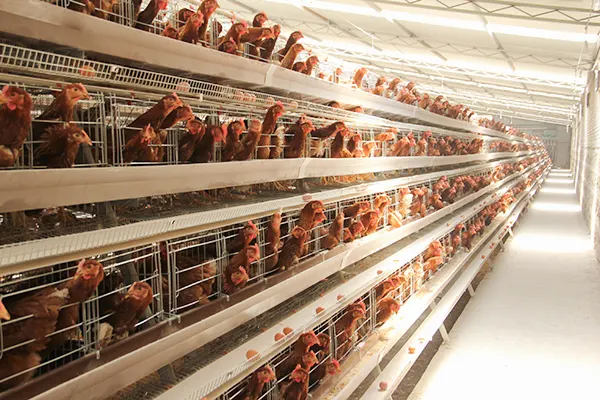How to Raise Egg-Laying Chickens in Winter?
Winter presents some special requirements for raising egg-laying chickens. Under cold weather conditions, maintaining the productive performance and health of egg-laying chickens requires attention to specific key points and considerations in winter poultry farming.
- Providing Suitable Temperature: With lower temperatures during winter, it’s crucial to maintain adequate warmth for chickens to sustain normal physiological functions and egg production. Set up appropriate heating equipment inside the coop, such as electric heaters or heat lamps, to maintain the internal coop temperature stable at 15-20 degrees Celsius. Additionally, ensure good ventilation in the coop to prevent excessively high humidity.
- Supply of Feed and Water: In cold weather, chickens may have reduced appetites. However, it’s essential to provide sufficient feed and water. Include adequate vitamins and minerals in the feed to enhance the chickens’ immune system and resistance. Ensure feed and water supply remains unfrozen by employing heating or insulation measures.
- Maintaining Good Hygiene: Higher humidity during winter can foster the growth of pathogens and parasites in the coop. Regularly clean the coop to maintain dryness and cleanliness, promptly replace coop bedding, and pay attention to disinfection. Use appropriate disinfectants to prevent disease transmission.
- Controlling Stocking Density: Limited activity space for chickens in winter necessitates controlling the stocking density inside the coop to avoid overcrowding. Overcrowding can lead to increased aggression and stress among the chickens, impacting egg production rates and health conditions.
- Enhanced Flock Management: Chickens are more vulnerable to diseases in winter. Strengthen flock management by regularly observing the chickens’ health status and taking immediate action if abnormalities are detected. Focus on maintaining a clean and dry rearing environment, regularly clean the coop of chicken manure to prevent disease spread.
- Providing Suitable Lighting: Reduced daylight hours in winter can affect egg-laying rates. Use artificial lighting to extend the lighting period, maintaining 12-14 hours of light per day. Proper lighting stimulates the secretion of egg-laying hormones in chickens, increasing egg production rates.
- Cold Protection Measures: Employ various cold protection measures, such as adding thicker insulation materials to the coop, sealing drafts, and maintaining warmth inside. Additionally, provide adequate windbreak and shelter for chickens, like windbreak boards or sunshade nets, to protect them from cold and chilling winds.
By adhering to these key points and considerations, you’ll be able to successfully raise healthy, high-yielding egg-laying chickens in winter. Pay special attention to temperature control, feed and water supply, maintaining hygiene, managing stocking density, strengthening flock management, adjusting lighting duration, and implementing cold protection measures during winter chicken farming. Remembering these crucial points will help ensure the well-being and productivity of your chickens during the colder months.





